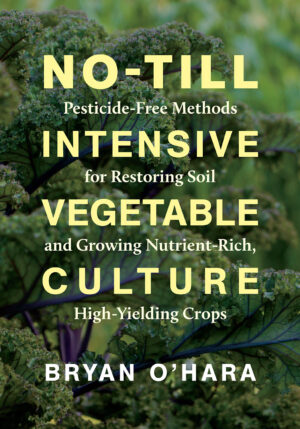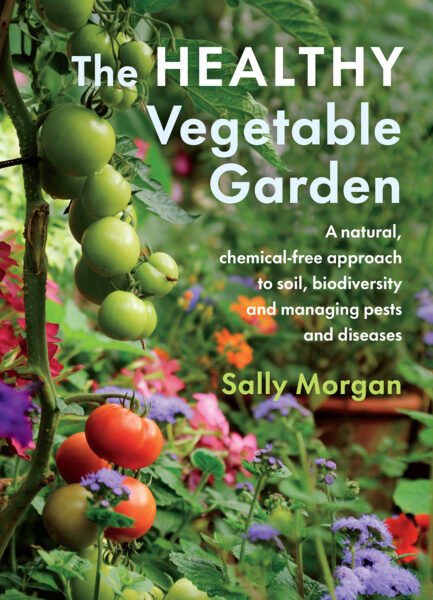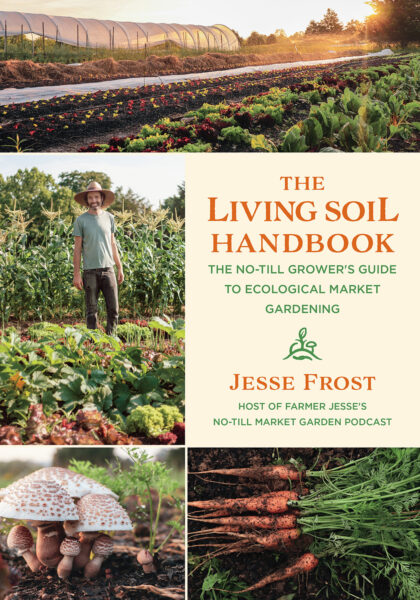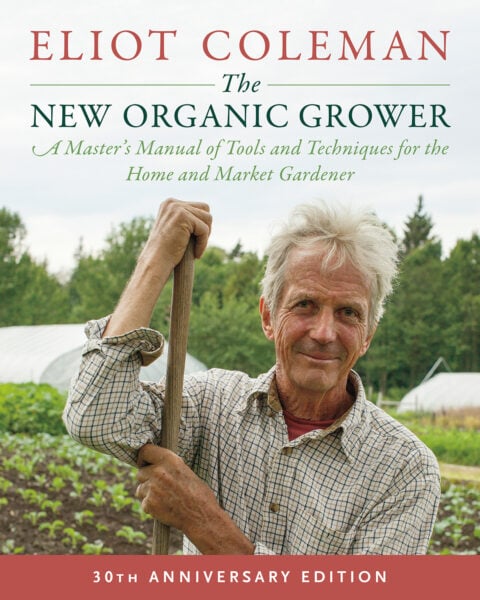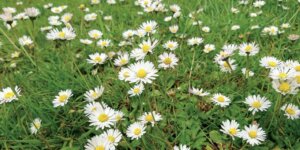Weeding: Work Smarter, Not Harder
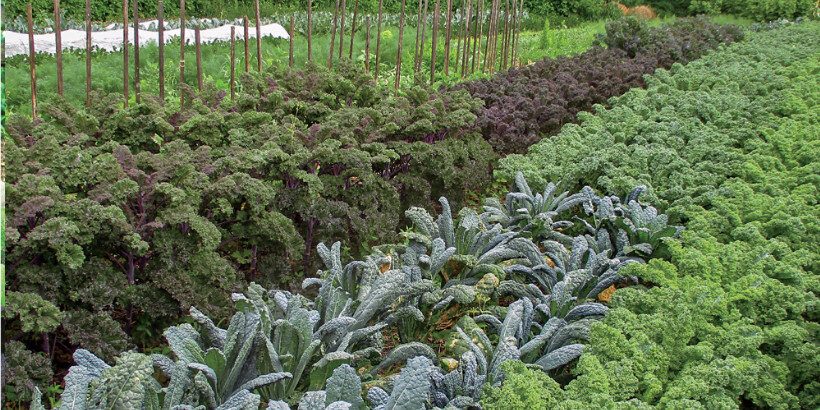
Weeds are the bane of every farmer and gardener’s existence. But before you go crusading against the weeds in your garden this year, take a moment to read what author Bryan O’Hara has to say about dealing with these pesky plants.
The following is an excerpt from No-Till Intensive Vegetable Culture by Bryan O’Hara. It has been adapted for the web.
How to Weed Effectively
Once a bed is shaped and the crop seeded, various tools and techniques can be effective to destroy weed growth, including hoes, flame weeding, solarization, and mulching. Hoes of many shapes and sizes are pulled by hand, pushed (like a wheel hoe), or mounted on a tractor.
Hoeing: An Essential Skill
Hoeing is a skill to be acquired. Speed and accuracy are constantly challenged, and thus hoeing requires not just physical strength but sharpness of mind, and especially speed of decision making to proceed quickly. If these conditions are met, hoeing can be very fast and effective.
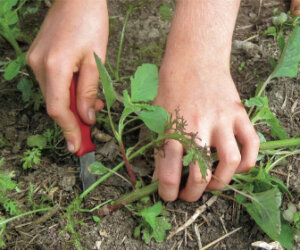
Image from No-Till Intensive Vegetable Culture
The usual objective of hoeing is to sever the top from the root of the weed, though some burying of small weeds also may be achieved. Most hoe blades travel about 1⁄2 inch (1.3 cm) below the soil surface when properly employed. It is more effective to hoe on a sunny day, because cut weeds generally are left to die in place, and the sun’s heat kills the cut weeds quickly before they reestablish roots. Hoes are best kept as sharp as possible, usually by use of a grinding wheel. The blades also are best if kept rust-free for a smooth passage through the soil. Another hoeing technique is to throw soil onto the row to smother weeds that are smaller than the growing crop.
Straight, evenly spaced rows make hoeing easier and more efficient. If the rows are misaligned and the space between rows becomes too narrow, a handheld hoe can simply be rotated to have a narrow profile. This is not an option when using wheel hoes and tractor-mounted hoes, however. Mulches and crop residues do get in the way when hoeing, slowing the process. However, with some skill, hoeing can effective to some degree in mulched soil conditions if required.
Mechanically it is generally easier to pull tools through the soil than push them. Wheel hoes must be pushed, but they can be very effective in areas where the soil is loose with minimal residue and the weeds are relatively small. In these conditions pushing a wheel hoe can proceed very quickly with minimal effort. Weed control implements mounted on a tractor can produce results very fast, but only if the field layout has been well planned to accommodate the machinery. Adjusting implements precisely can take much time; to be efficient, large areas need to be laid out with very even row spacing. It also is very easy for tractor-mounted tools to overwork soils unnecessarily, a condition that rarely happens with hoeing. Our use of tractor-mounted implements for weed control is negligible nowadays because of the low weed pressure on our farm and the wide diversity of crops at spacings to take advantage of highest yield and canopy coverage.
Pre-Emergent Weeding: How Does It Work?
Once seed has been placed in the soil, the first opportunity for weed control is pre-emergent weeding. This form of weed control is particularly useful in slow-germinating crops like the umbels (carrot, parsley, and parsnip) and is not practical for fast-germinating crops. In the case of carrot seed, which often takes 10 days or so to germinate, weed seedlings may be dispatched on day 7 or 8. In this way the first flush of weeds is destroyed and the carrot seedlings emerge within a couple of days into a weed-free bed. If further hoeing is planned and the crop was seeded in furrows, it is important not to disturb the seeds from their furrow spacing. Because of this, shallow pre-emergent hoeing is carefully done parallel to the rows and thoroughly over the entire bed surface. Wide hoes are utilized to achieve this. Solarization (as described in chapter 4) or flame weeders can also be carefully used for pre-emergent weed control. Flame weeding is detrimental to organisms that live on or near the soil surface, so we generally no longer utilize this approach. We have solarized carrot beds before germination for pre-emergent weed control with great success, but this does require appropriate weather conditions.
Surface Weed Control Options
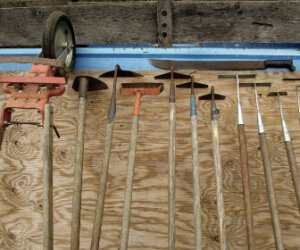
Image from No-Till Intensive Vegetable Culture
After seedlings of a broadcast seeded crop emerge, surface weed control options are basically reduced to either finger-and-thumb pulling, or cutting off individual weeds with a knife. These approaches also work well for in-row weeds in line-seeded beds. (Hoeing is faster for weeds between rows.) Finger- and-thumb pulling of weeds is not appropriate if pulling out the weeds would disturb the crop roots. Once annual weeds reach that size, they are cut off at the soil line with a serrated knife instead.
One advantage of finger and thumb weeding or knife weeding is that the weeds are in hand so they can be collected and removed from the field relatively easily, assuring that there will be no regrowth. Perennial weeds require special consideration—cutting them with a knife is not sufficient for termination, though it can delay seed formation. Perennials have to be pulled out either if their growth will significantly reduce crop yield or if they will further proliferate by going to seed or detrimentally expanding their root mass before the crop is harvested. If this is not the case, then perennials are often more easily dealt with after crop harvest.
If a crop was seeded or planted into straight furrows, then hoeing can begin after germination. Hoeing after crop germination is first done with very small hoes like wire hoes that will not bury crop seedlings with soil. It then progresses to thin-bladed hoes like the collinear hoe that pose little risk of smothering the crop. Later hoeings are achieved with bigger hoes that throw soil to the side as they are pulled and may progress to hilling hoes and equipment meant to throw relatively large volumes of soil toward the crop line. Because vegetable crops are grown at a wide range of between-row spacings, it’s useful to have hoes of many sizes so the entire width of the between row space can be hoed in a single pass. This can be achieved by buying wide-bladed hoes and grinding or cutting the blades to the length of the between-row spacings.
Moving Onto Mulching
Mulching or further mulching row-planted crops after the use of weed control tools can provide additional weed control and soil benefits. If weeds are growing amidst a crop that is close to maturity and the weeds are threatening to go to seed, a machete works well to chop off their tops just above the tops of the crop plants. If the weeds have not produced mature seed yet, then the cut seed heads can be left in the field. But if mature weed seed may be present, the seed heads are gathered and removed from the field. If the weeds are low growing, they can be hoed out and gathered up with pitchforks. The weeds can also be mown and bagged with lawn-mower-style equipment.
The critical goal is to ensure that no viable weed seeds are allowed to fall to the ground in the field.
Recommended Reads
A Meditation On Garden Weeding: Reflecting On A Day In the Garden
Weed Suppression: Choosing The Right Cover Crops & Living Mulches
Recent Articles
Everyone loves a refreshing, fermented, nutritious drink…even your garden! Take your fermentation skills out of the kitchen and into the garden by brewing fermented plant juice. The following is an excerpt from The Regenerative Grower’s Guide to Garden Amendments by Nigel Palmer. It has been adapted for the web. How to Make Fermented Plant Juice Fermented…
Read MoreWant to see your crops thrive this upcoming growing season? The key is in soil fertility and health. Spend time maintaining your soil’s health to guarantee bigger and better crops come harvest time! The following is an excerpt from No-Till Intensive Vegetable Culture by Bryan O’Hara. It has been adapted for the web. What Is Soil Fertility?…
Read MoreMany know the effects of catnip on our feline friends, but few realize that catnip has medicinal effects for humans. From stomach aches to reducing fevers, catnip is a versatile herb with many benefits. The next time you grow this plant for your cat you may end up taking a few cuttings for yourself! The…
Read MoreIt’s time to take control of your seeds and become a plant breeder! Saving your seed allows you to grow and best traditional & regional varieties, and develop more of your own. The following excerpt is from Breed Your Own Vegetable Varieties by Carol Deppe. It has been adapted for the web. Becoming A Plant…
Read MoreRewilding is one of the best things you can do for the biodiversity of your farm or garden. By no longer mowing your lawn, flowers will start to grow, creating a meadow and a habitat for creatures that often get forgotten. The following is an excerpt from The Healthy Vegetable Garden by Sally Morgan. It…
Read More

